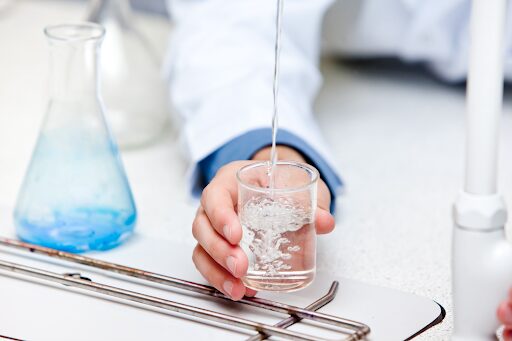Water purity is critical in any laboratory setting to ensure accurate test results, maintain equipment longevity, and meet regulatory standards. Different applications, from pharmaceutical research to industrial testing, require specific water purification methods to remove contaminants that could interfere with the processes.
This article will explore the various lab water purification systems, how they work, and their best applications.
Types of Lab Water Purification Systems
Reverse Osmosis (RO)
How it Works: Reverse osmosis uses a semi-permeable membrane to remove up to 99% of dissolved salts, bacteria and organic contaminants from water. It forces water through the membrane under pressure, leaving impurities behind.
Benefits:
- Produces high-purity water suitable for general laboratory applications
- Removes a wide range of contaminants, including heavy metals and microorganisms
- Cost-effective for large-volume water purification
Best Applications:
- General laboratory use
- Feedwater for ultrapure water systems
- Pre-treatment for deionisation or distillation
Deionisation (DI)
How It Works: Deionisation removes charged ions (minerals and salts) from water using ion exchange resins. These resins attract and replace unwanted ions with hydrogen and hydroxyl ions, producing highly purified water.
Common Uses:
- Applications requiring low conductivity of water
- Analytical chemistry and electronics manufacturing
- Pre-treatment for ultrapure water systems
Limitations:
- It does not remove organic contaminants, bacteria or particulates
- Requires frequent resin regeneration or replacement
Distillation
The Process: Distillation involves boiling water and collecting the condensed steam, leaving impurities behind. This method removes most dissolved solids, bacteria and organic compounds.
Purity Level: Produces highly purified water, free from most contaminants.
Best Applications:
- Clinical and pharmaceutical labs
- Preparing reagent-grade water
- Removing non-volatile contaminants
Ultrafiltration (UF)
Role in Purification: Ultrafiltration uses a membrane with tiny pores to remove bacteria, endotoxins and some viruses from water. It is often used as a final purification step.
Best Applications:
- Cell culture and microbiology labs
- Endotoxin-sensitive applications
- Pre-treatment for high-purity water systems
UV Purification
How It Works: UV purification uses ultraviolet light to neutralise microorganisms and break down organic compounds.
Best Applications:
- Microbiological control in water systems
- Elimination of organic contaminants
- Combined with other purification methods for enhanced effectiveness
Choosing the Right Purification System for Your Lab
Key Considerations
- Purity Requirements: Determine the water purity level needed for your experiments and equipment.
- Budget: Some systems, like reverse osmosis, are cost-effective for general use, while ultrapure systems require higher investment.
- Volume Needs: Labs requiring large amounts of purified water daily may benefit from RO or DI systems.
Matching Purification Methods to Lab Applications
Application | Recommended Purification Method |
General lab use | Reverse Osmosis (RO) |
Analytical Chemistry | Deionisation (DI) |
Cell culture | Ultrafiltration (UF) |
Pharmaceutical production | Distillation |
Microbiological studies | UV Purification |
Conclusion
Choosing the right lab water purification system is essential for maintaining accuracy in research, extending equipment lifespan and ensuring reliable results. Different purification methods, such as reverse osmosis and deionisation, serve specific purposes depending on the application.
Techmate understands the importance of high-quality lab water and offers a range of labware solutions to support your purification needs. With our flexible, customer-focused approach, we provide tailored solutions that corporate suppliers often overlook.
For expert advice on selecting the best water purification system for laboratory use, contact Techmate today. Visit Techmate’s website or speak with our team to explore the right solution for your lab.

